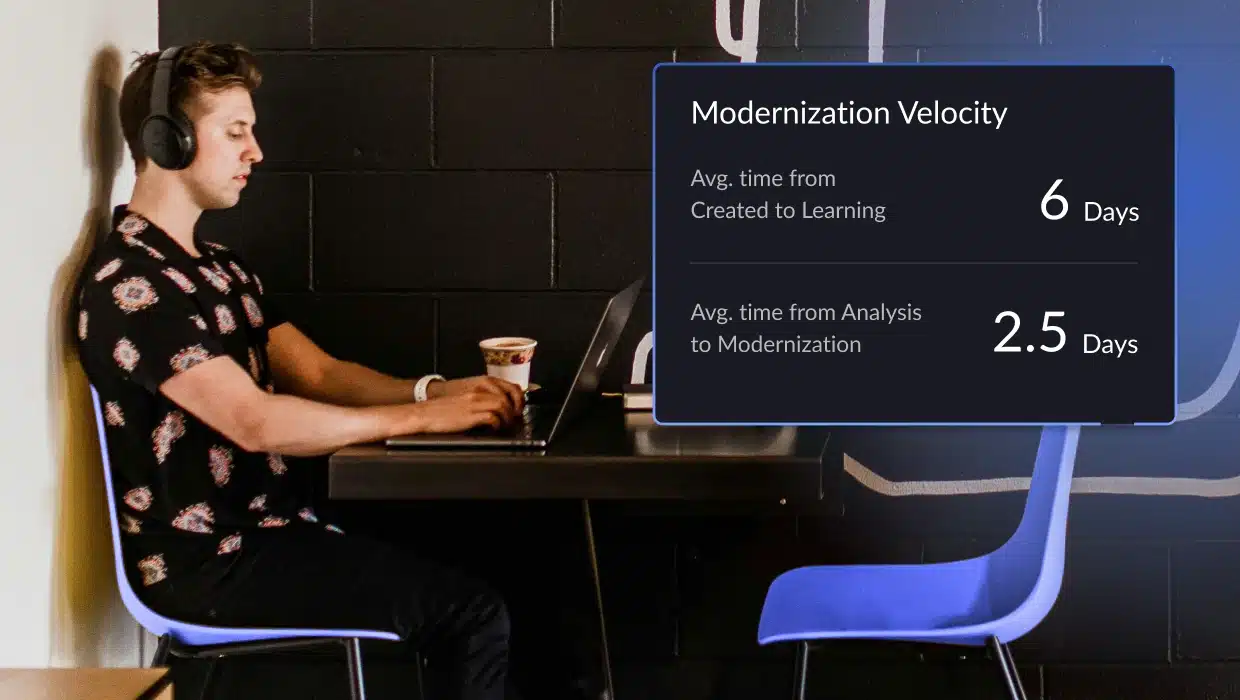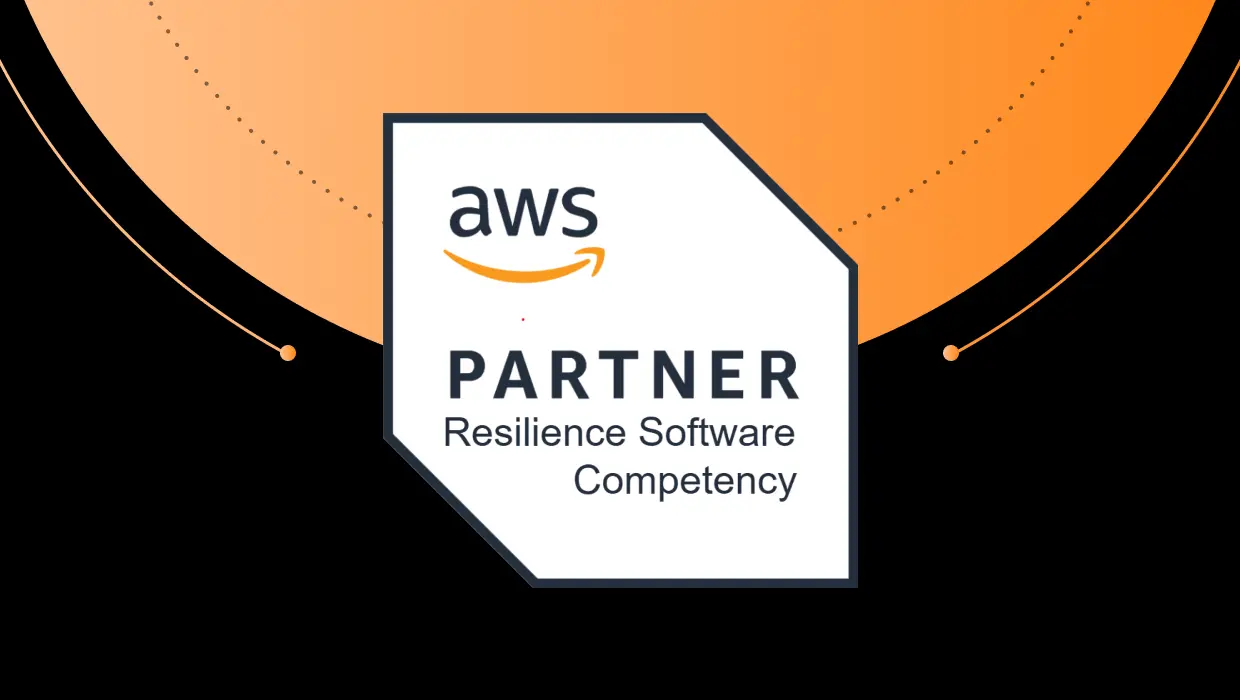Technical debt is more than just a weight that drags down all of your development projects and app performance with delays, lags, and extra costs. It’s also an indicator of business success and failure: strong technical debt management correlates with better business growth and revenue, while poor management correlates with incomplete and poorly done attempts at modernization. In short, companies that build processes for continuously maintaining and improving application architecture and resolving technical debt perform better.
While the indicator is cautiously categorized as a correlational indicator rather than a causal factor, most companies know that clearing out old technical debt and modernizing their library of apps is the right thing to do.
That’s not the issue—the issue is making technical debt management a standard part of business, even in the midst of product deadlines, bigger projects, and day-to-day operational tasks. But setting the groundwork by building processes for continuous care efforts and taking the first step toward modern application architecture can help you elevate your entire software portfolio.
Why All Apps Require Continuous Care, From New Features to Managing Application Architecture
There’s no such thing as a finished app. All internal and client-facing applications are prone to architectural drift and complexity as new releases are issued and new functionality is added. They also need continuous care as users interact with them, new technologies emerge, and the landscape in which the tool needs to operate shifts to become more regulated or security-conscious.
While individual projects may reach the finish line, apps must be regularly revisited. Consider these three critical aspects of ongoing care and attention for every app in your software portfolio:
Surface-Level Care: Debugging and Feature Updates
Both cloud-native, AI-powered apps and legacy technology need surface-level attention during daily operations. There may be bugs that develop over time, static code issues, or integrations that don’t click nicely into place. You might also need to release small patches and new features that meet the needs of new use cases over time.
Intermediate Care: Addressing Known Technical Debt
Ideally, your project managers and developers are already keeping clear documentation regarding the intentional technical debt of past projects. These records can serve as the basis for present and future cleanup projects, and that is a much cleaner and more efficient system than having to uncover mystery technical debt once it starts to cause problems.
Even though this is a bigger series of problems, it should still be a continuous part of your operations. Tactics for making technical debt part of continual maintenance include:
- Using automated tools for performance monitors and early outage detection
- Regularly running a static code quality and dynamic code quality analysis
- Staying aware of vulnerabilities due to integrations with third-party tools or reliance on third-party components
- Staying cognizant of aging frameworks and what changes they trigger
- Documenting known technical debt in project records
- Routinely assessing and prioritizing technical debt for new projects or sprints
Advanced Care: Monitoring and Addressing Architectural Debt
Application architecture debt is the most challenging to deal with. It takes more time and effort to resolve and may not immediately impact your users. This, along with how hard it can be to uncover and untangle architectural debt, makes it easy to push the timeline for later. But that difficulty is precisely why it’s important to implement continuous architectural debt maintenance processes.
It’s messy, and when it sits unresolved for too long, it can have the biggest negative effects on your app’s performance. Architectural debt encompasses:
- The use of complex workarounds to make new features and functions work within an existing infrastructure
- Development of inefficient algorithms
- Architectural drift, or how the architecture as implemented differs from the architecture as planned, which can make the operational integrity of the app fragile
Advanced care projects can’t just be a series of bandaids or nudges. Occasionally, these projects will require large rearchitecting, reworking, or even rewriting. Eventually, aging components, architectural drift, and architectural complexity will drive your modernization requirements. Also, your team might prioritize shifting the app to an entirely new framework or language based on modern requirements and newly available technology.
Related: Unlocking Excellence: Navigating the Path of Continuous Modernization
Prioritize Switching to Modern Application Architecture as Part of Your Continuous Care Objectives
Switching from a teetering, complex software architecture to a modern application architecture is one of the best ways to commit to a cleanup of your existing software portfolio. Sweeping changes won’t eliminate the need for continuous monitoring and maintenance, but it can eliminate hours spent trying to make apps perform in sub-optimal frameworks.
What Is Modern Application Architecture?
Modern application architecture is a cloud architecture that incorporates microservices. The world is switching to cloud computing because it’s more scalable and flexible in the diverse consumer and work environments today’s apps need to perform in.
Whereas old architectures were typically built in isolation or within a specific ecosystem, cloud technologies are far more fluid. They can work in public, private, or hybrid clouds and are built on a foundation of cloud infrastructure.
The fundamental elements of modern cloud-native architecture are:
- A cloud-based infrastructure within a virtualized environment
- Microservices that make up distinct apps and features—while the microservices themselves are distinct and autonomous, they can interact within a larger space
- Containers for housing microservice apps within a larger library
- An underlayer of analytics, monitoring, caching, and storage functions that back up the app and keep DevOps teams apprised of unexpected performance changes
This style of architecture aligns with the needs of modern organizations and users. The tools are more fluid, easier to update and upgrade, and have continual monitoring processes built into the code itself.
Key Benefits of Moving to Modern Architecture
Modern architecture offers a number of benefits that traditional architecture doesn’t. Key benefits include:
- Reliability: Because the architecture is simplified and updated, performance becomes more reliable. Engineers can be more confident that the app will be up and running—and more assured that it can handle the tasks users require.
- Easier care and technical debt management: Software architects can more easily monitor performance for problems or recognize the signs of architectural drift. Modernized apps can also interact more easily with AI-augmented tools for future updates and fast changes.
- Faster releases: Continuous care doesn’t just focus on background fixes; it also includes the upgrades, releases of new versions, and supplemental releases your customers demand. With a cloud-native architecture, you can use automation, DevOps collaboration practices, and fewer roadblocks to deliver releases on time.
- Cloud elasticity: As your organizational demands change, you can easily increase or decrease the resources each app needs.
- Eliminating the problems of conventional, outdated architectures: Sometimes, the most valuable advantage of switching to a new architecture isn’t the value of the new architecture itself but the ability to let go of old, ongoing problems. Your development team will become more productive after moving apps to a cloud architecture, and you can tackle technical debt more cost-effectively.
Related: Why Mastering Architectural Observability is Pivotal to Managing Technical Debt
Four Steps to Making Modern App Architecture a Priority in 2024
Just as most organizations know ignoring technical debt is a bad long-term approach, they also know switching to a modern app architecture is the right move. But there are a lot of barriers in the way: the cost, the time commitment, the short-term opportunity cost, and so on. If you and your team want to prioritize switching your software portfolio to a modern architecture, start with these key steps:
1. Get Executive Buy-In
If your leadership team doesn’t agree with the need to modernize your app architecture, start advocating for their buy-in. Explain the benefits cloud-native apps provide, the costs of maintaining old architectures, and the force that technical debt exerts in financial terms.
2. Start Tackling Technical Debt to Give Your Modernization Project the Right Start
Before modernization begins, start investigating existing technical debt and architectural technical debt. Automated analysis tools and architectural observability programs can start to parse through the opaque structures of old and new apps.
3. Commit to Rearchitecting Instead of “Lift-and-Shift” Alternatives
Simply shifting apps to the cloud is a moderately sized win, and it can produce some cost-savings and value. Depending on the buy-in of your executive team, they may view lift-and-shift deployment as a compromise.
However, this approach may not help your organization cut costs or see faster, more reliable deployments in the future. It addresses only symptoms and small portions of the underlying issues. Continue to advocate for shifting everything to a modern cloud-native architecture.
4. Start Building Processes So You Never Need a Big, Disruptive Overhaul Project
As your modernization project is underway, or maybe even before you start, begin building processes for continual maintenance and modernization. This can include implementing performance monitoring tools, adding technical debt management to your project workflows, and seeing where automated and/or AI-augmented tools can help you keep technical debt in check. For example, use architectural observability tools to streamline the process of identifying and prioritizing architectural debt.
Make Modernizing Your Software Portfolio Possible with AI-Driven Architectural Observability Tools
The work of maintaining and improving apps is never done, but modernizing the application architecture to cloud-native approaches can significantly cut down on that work—and risk of failure. At vFunction, we provide an AI-driven Architectural Observability Platform for observing your architecture and managing and resolving technical debt on a continuous basis. Request a demo today to see how you can streamline the process of app modernization.






